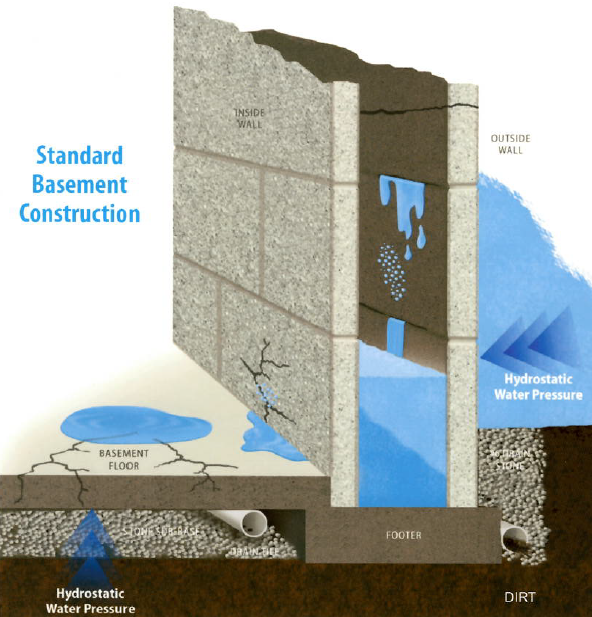Understanding how water infiltrates your foundation is crucial for maintaining the structural integrity of your home. Once water breaches your basement, addressing key areas becomes paramount to prevent extensive damage. In this exploration, we delve into the various pathways through which water can enter your foundation, highlighting the importance of comprehensive solutions.
Water Enters from Under the Floor
One common entry point is through the floor, driven by the buildup of hydrostatic pressure. Ignoring this issue may lead to floor damage as the pressure forces it upward. A holistic approach to repair is essential to prevent water from returning.
Between Floor and Walls
Clogged or missing footer tiles contribute to water being forced between the wall and the floor due to hydrostatic pressure. Tackling this problem is crucial to safeguard against potential structural damage and the devaluation of your property.
Through Windows
Poor grading is a typical cause of water intrusion through windows. Addressing this issue is vital to ensure that water doesn’t find its way into your basement, preventing not only water damage but also maintaining the overall health of your foundation.
Through Cracks in the Walls
Cracks originating from the exterior can serve as access points for water. The lateral pressure from outside your basement walls creates vulnerabilities, allowing water to weaken the structure. Addressing these cracks is essential for preventing water entry and maintaining a robust foundation.
Through Cement Blocks
Water absorption into the pores of cement blocks can lead to a buildup inside the wall, eventually causing leaks at the base. This not only results in water damage but also creates an environment conducive to mold growth. Implementing effective solutions is crucial to prevent such issues and preserve the longevity of your foundation.
Safeguarding your home against water infiltration demands a comprehensive approach. Ignoring any one area could lead to the persistence of water-related problems, causing extensive damage and devaluation. By addressing issues like hydrostatic pressure, missing or broken footer tiles, poor grading, wall cracks, and water absorption in cement blocks, you can fortify your foundation against potential risks, ensuring a secure and resilient living space for years to come.


